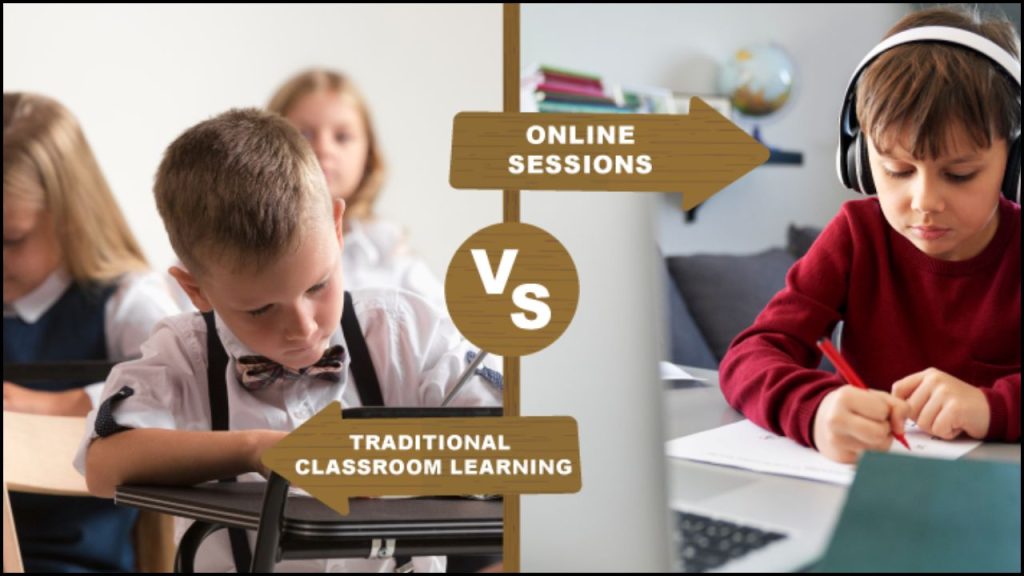
In the modern education system, both digital learning and traditional classroom teaching have made a significant impact. Convent schools, known for discipline and strong academic focus, are exploring the best ways to balance innovation and tradition. Digital methods are gaining popularity, but traditional teaching remains a powerful tool. This article compares both approaches within the specific context of convent schools, where values, structure, and academic performance are closely interlinked.
Table of Contents
Key Features of Digital Learning in Convent Schools
- Structured E-learning Modules
Convent schools often use carefully selected digital content aligned with their curriculum and moral values. - Use of Learning Management Systems (LMS)
Teachers track student progress through platforms like Google Classroom and Moodle. - Interactive Content
Animated lessons and interactive videos help in a better understanding of subjects like science and mathematics. - Remote Accessibility
Students can access lessons from home, allowing flexibility and continuity during disruptions. - Skill Development
Digital tools enhance technical and problem-solving skills at an early stage.
Key Features of Traditional Classrooms in Convent Schools
- Teacher-Centric Learning
A strong teacher-student relationship forms the foundation of convent classroom education. - Discipline-Oriented Approach
Strict schedules and rules maintain order and focus during lessons. - Character Building
Moral science and value-based discussions shape a student’s character in a personal environment. - Routine-Based Education
Fixed routines help build consistency and time management. - Immediate Feedback
Teachers provide on-the-spot correction and praise, supporting better learning outcomes.
Comparison: Digital Learning vs Traditional Classroom in Convent Schools
| Aspect | Digital Learning | Traditional Classroom |
|---|---|---|
| Interaction | Mostly one-way, depending on the tools used | Face-to-face, emotionally engaging |
| Learning Speed | Self-paced, allows replay and revision | Teacher-paced, limited time for repetition |
| Discipline | Depends on parental supervision and student responsibility | Strictly enforced by school policies and teacher authority |
| Accessibility | Available from anywhere with internet | Requires physical presence in school |
| Content Delivery | Visuals, games, online quizzes | Needs notebooks, textbooks, and stationery |
| Technology Requirement | Lectures, blackboard, and written assignments | Mostly one-way, depending on tools used |
| Student Engagement | May vary, high with gamified content | High, due to personal teacher interaction |
| Cost Involved | High for setup, software, and maintenance | Relatively low, recurring textbook and uniform costs |
| Assessment Method | Online quizzes, auto-graded tests | Written exams, oral questioning |
| Suitability for Convent Values | Requires controlled content and monitoring | Directly supports religious and moral teachings |
Benefits of Digital Learning in Convent Schools
- Custom Learning Paths
Each student progresses at their own pace without fear of lagging. - Data-Driven Insights
Teachers can use analytics to identify weak areas and develop an improvement plan. - Global Exposure
Access to world-class resources enhances subject knowledge. - Learning Continuity
Education continues during pandemics or emergencies without major interruptions. - Visual Learning Support
Complex topics like physics or biology become simpler through simulations.
Benefits of Traditional Classrooms in Convent Schools
- Emotional Development
Daily peer interaction helps in emotional intelligence and teamwork. - Better Focus
Minimal distractions promote deeper concentration in class. - Spiritual Growth
Regular prayer sessions, moral instruction, and religious studies align with convent values. - Cultural Training
Students participate in school events, competitions, and community outreach. - Real-time Clarification
Instant doubt clearing during classroom discussion avoids confusion.
Challenges of Digital Learning in Convent Schools
- Lack of Supervision
Students may get distracted or misuse devices without proper monitoring. - Screen Fatigue
Long hours in front of screens can harm eyes and cause attention loss. - Digital Divide
Not all students have equal access to devices or stable internet. - Value Control
Exposure to online content might clash with the moral framework of convent education.
Challenges of Traditional Classrooms in Convent Schools
- Limited Resources
Some convent schools may lack updated teaching tools or lab materials. - Pace Limitations
Students who need more time may struggle to keep up. - Fixed Learning Style
Not suitable for all learners; some students benefit from visual or hands-on methods. - Inflexibility During Emergencies
Natural disasters or pandemics may disrupt regular classes.
Role of Teachers in Both Systems
| Role | Digital Learning | Traditional Classroom |
|---|---|---|
| Content Facilitator | Guides students through platforms, provides resources | Delivers lectures and gives structured instruction |
| Motivator | Encourages online participation and assignment completion | Builds confidence through personal mentorship |
| Discipline Enforcer | Sets online rules and expectations | Enforces school discipline and classroom conduct |
| Feedback Provider | Offers comments via email or apps | Gives immediate verbal and written feedback |
| Moral Educator | Guides students through platforms, and provides resources | Needs to find ways to deliver value digitally |
Blended Learning: A Balanced Approach
- Hybrid Model Usage
Convent schools are now experimenting with combining both methods for maximum benefit. - Rotation Models
Some classes happen in person, while others are assigned as digital homework. - Teacher Training
Educators are being trained to handle both digital tools and maintain classroom management. - Parent Collaboration
Parents support digital learning at home while schools reinforce discipline on campus.
Student Preferences in Convent Schools
- Middle School Students
Often enjoy digital formats for science and math, but prefer teacher guidance for language subjects. - High School Students
Seek a mix of self-learning and teacher support to prepare for board exams. - Primary Students
Learn better with physical presence and attention from teachers.
Key Takeaways
Convent schools thrive on strong values, discipline, and structured learning. Digital tools offer flexibility and engagement, but traditional classrooms provide emotional support and moral grounding. A balanced combination of both can create a powerful learning environment suited to the unique atmosphere of convent education. Adapting carefully ensures that convent schools remain relevant while holding on to their rich heritage.





